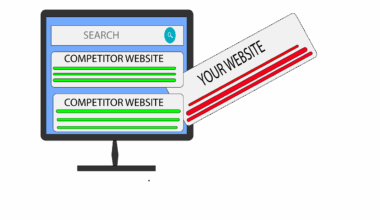How to Forecast Workforce Needs in the Finance Sector
Workforce planning in the finance sector is pivotal for aligning human resources with organizational goals. A systematic approach helps mitigate risks while ensuring that the organization’s objectives are met. One essential aspect involves assessing current workforce capabilities and gaps. Create a comprehensive inventory of existing skills and competencies among employees. As the financial landscape evolves, continuous assessment aids leaders in strategic adjustments. This process encompasses several key steps: analyzing business objectives, assessing workforce needs, and designing an actionable plan. Consider utilizing predictive analytics to assist in forecasting future workforce requirements based on historical data and market trends. Collaborating with department heads ensures that insights are representative of actual needs. To accomplish this, a culture of communication and feedback should be fostered throughout the organization. Establishing metrics to measure successful outcomes is vital in assessing effectiveness. Furthermore, adapting to the evolving financial market requires proactive planning. Financial organizations must remain agile and responsive to external factors impacting workforce dynamics. In summary, effective workforce planning in finance necessitates ongoing evaluation of employee capabilities, market shifts, and organizational requirements to optimize workforce utilization.
Understanding the intricacies of workforce forecasting is crucial. Gathering data is the first step to informed decision-making. Information should include employee performance metrics, industry trends, and economic indicators. Using technology could significantly improve this data collection process. Implementing Human Resources Management Systems (HRMS) streamlines data procurement while enhancing accuracy. Combining qualitative insights, such as employee feedback, with quantitative data offers a holistic view of workforce capacity. Stakeholder engagement is essential in this context. Engaging managers and team leads ensures insights are grounded in real-world experiences. Regular workshops or focus groups can be conducted to gather this qualitative data. Looking ahead, it’s important to factor in potential pressures, such as regulatory changes affecting finance. Financial organizations are susceptible to shifts in governance, and forecasting these impacts requires foresight. Companies must adapt their workforce strategies in response to these changes. Moreover, demographic shifts, including aging populations and workforce diversity, mandate attention. Understanding these dynamics aids in creating a responsive workforce model. Organizations that proactively plan for shifts ensure continuity and competitiveness in the finance sector while aligning with broader business goals.
Strategies for Effective Workforce Planning
Incorporating a strategic approach to workforce planning in finance amplifies organizational effectiveness. One viable strategy is conducting scenario planning. Analyzing various potential economic outcomes helps organizations prepare for unexpected fluctuations. Using scenario planning as a framework can equip finance teams to adjust rapidly to changing environments. Another strategy lies in establishing strong partnerships with educational institutions. Such collaborations can bridge the skills gap by creating internship and training programs. Partnering with universities ensures a steady pipeline of talent that aligns with industry requirements, enhancing recruitment strategies. Additionally, leveraging technology provides real-time analytics to support strategic decisions. Implementing tools that use Artificial Intelligence (AI) for talent acquisition and workforce analysis can streamline processes and reduce bias. Hiring managers can make data-driven decisions, identifying which positions require urgent attention. Cross-training employees also emerges as a beneficial strategy, promoting adaptability and ensuring business continuity. Empowering employees through training and development not only builds loyalty but also maximizes productivity. In conclusion, these strategies together create a resilient workforce model that effectively addresses the unique challenges of the finance sector.
Understanding employee turnover is integral to workforce forecasting. High turnover negatively impacts productivity and increases recruitment costs. Analyzing turnover rates allows HR professionals to identify patterns or trends. Research typically indicates that several factors contribute to employee departures, such as job satisfaction, company culture, and opportunities for advancement. Conducting exit interviews can reveal insights that may improve retention strategies. Organizations should promptly address concerns raised during these interviews. Establishing a robust onboarding program is instrumental in reducing turnover rates. The onboarding process provides new hires with essential resources and training to succeed. Additionally, providing opportunities for professional growth, such as internship programs or mentorship, fosters employee engagement. Encouraging employee feedback creates a culture of transparency. To build a supportive work environment, financial organizations should regularly solicit input from team members on policies and practices. This open communication reinforces commitment and engagement. Understanding the root causes of turnover facilitates proactive planning. Organizations can implement solutions tailored to their workforce’s unique needs, thereby reducing overall turnover while ensuring a more stable financial team.
The Role of Technology in Workforce Planning
Technology increasingly plays a significant role in workforce planning within the finance sector. HR software solutions have transformed data management, bringing efficiency to the workforce analysis. These tools facilitate workforce modeling, enabling finance organizations to forecast accurately. Integrating tools such as predictive analytics can help identify future hiring needs quickly. By analyzing trends and existing data, organizations can proactively adjust their workforce strategies to mitigate risks. Additionally, workforce management software aids in tracking employee performance effectively. It generates dashboards providing insights into workforce productivity. Thus, decision-makers can evaluate their team’s strengths and weaknesses more effectively. Embracing the cloud for data storage enhances collaboration, ensuring transparency across all levels of the organization. Moreover, automation of routine HR tasks, such as payroll processing, allows HR professionals to focus on strategic initiatives. Cloud-based environments also enable remote work arrangements, significantly flexible in managing workforce needs. Investing in tools promoting efficiency yields greater overall productivity. Therefore, integrating technology into workforce planning not only optimizes operations but also positions finance organizations to adapt swiftly to market changes.
Implementing a diverse hiring strategy is essential for a robust workforce in finance. Diversity fosters innovation and enhances analytical problem-solving. Organizations benefit from varied perspectives and experience levels to tackle complex issues. To cultivate this diversity, companies should engage in equitable recruitment strategies that promote inclusivity. Establishing relationships with diverse professional organizations can help reach underrepresented communities in finance. Moreover, investing in diversity training programs prepares existing employees to create a supportive atmosphere that values differences. Fostering an inclusive workplace results in satisfied employees and increased retention rates. Additionally, organizations should continually assess their diversity initiatives. Collecting data on diversity metrics allows finance firms to gauge effectiveness and identify areas for improvement. Further, setting clear diversity goals ensures accountability. Stakeholders should be involved to encourage organizational commitment to these goals actively. Developments in employee resources, such as mentorship programs for minority groups, enhance engagement and professional growth. These strategies contribute to creating a workforce well-equipped to navigate an increasingly complex finance landscape effectively. Therefore, organizations prioritizing diversity are investing in future success.
Conclusion
In conclusion, workforce forecasting in the finance sector requires a unique blend of strategies and technologies. Organizations must prioritize data collection and analysis to identify skills gaps and predict future needs. Engaging with educational institutions and establishing strong partnerships fosters a steady pipeline of qualified talent. Adaptability, supported by technology, allows organizations to remain resilient amidst changing market conditions. Moreover, understanding the significance of diversity in hiring enriches organizational culture, fostering innovation. Implementing feedback mechanisms and proactively addressing employee concerns bolsters retention efforts. These practices create an engaged and productive workforce capable of meeting future challenges. Moreover, continuous assessment and adjustment of workforce plans are crucial in aligning resources with business objectives. Organizations should view workforce planning as an ongoing process, integrating insights gleaned from various sources. Collaborating with business leaders ensures that financial strategies remain aligned with human capital needs. Ultimately, the finance sector can thrive through effective workforce planning, positioning itself as a leader in the industry. By committing to these practices, organizations enhance their competitive advantage while preparing for future workforce demands.
Despite the challenges faced, a structured and thoughtful workforce planning approach can yield significant benefits.


